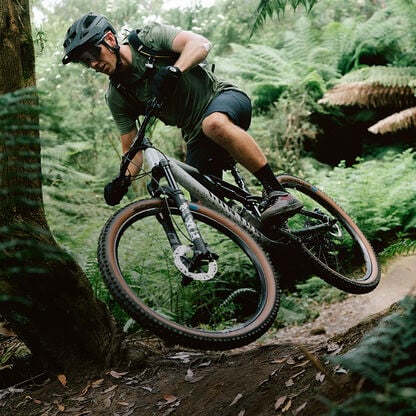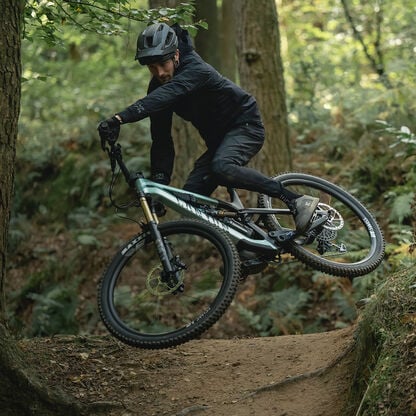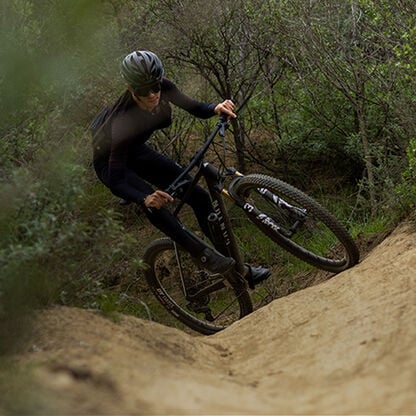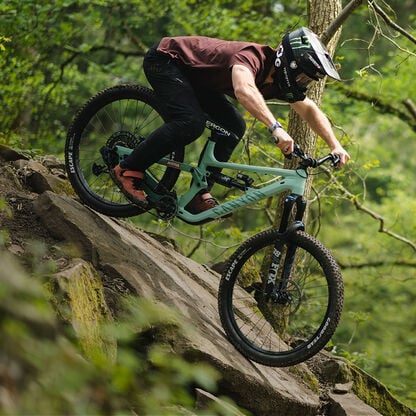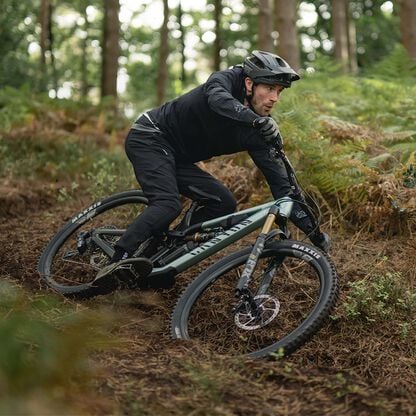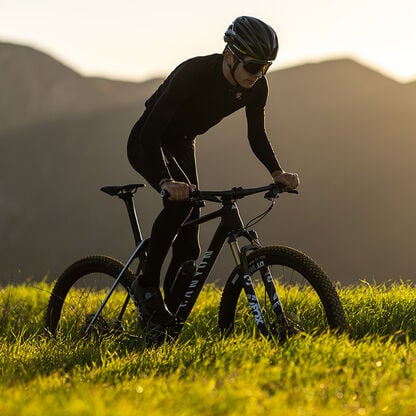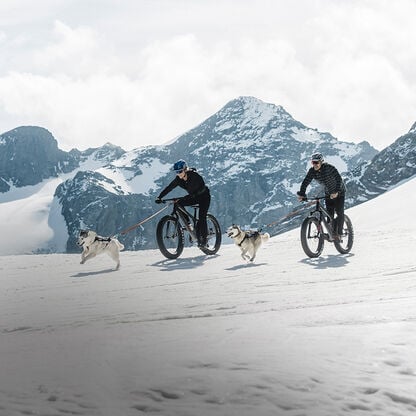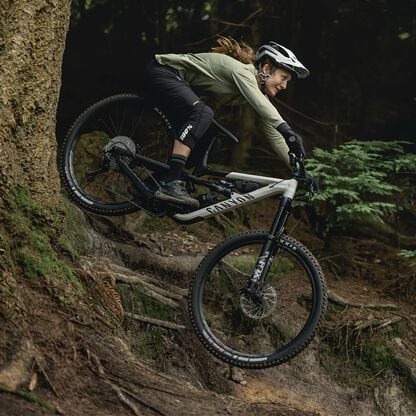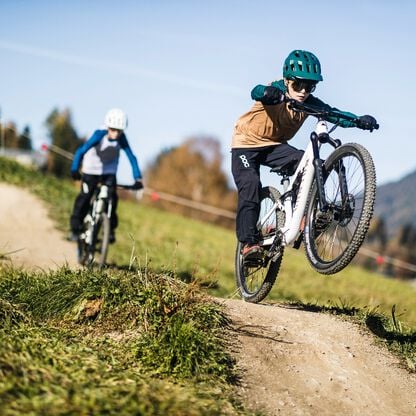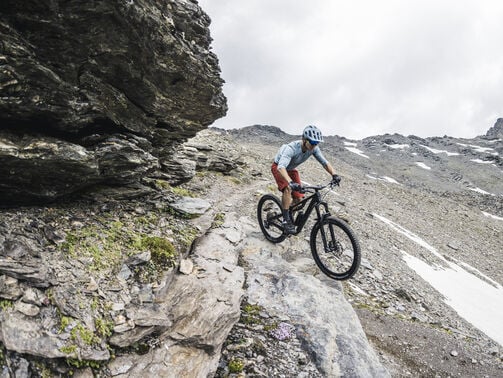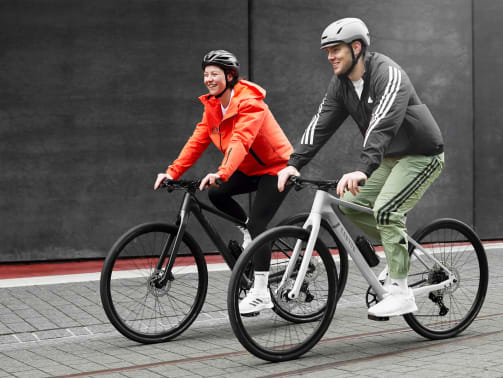Choosing between a hybrid and a mountain bike: Which suits me better?
Torn between a hybrid and a mountain bike? This brief guide will outline the key differences.

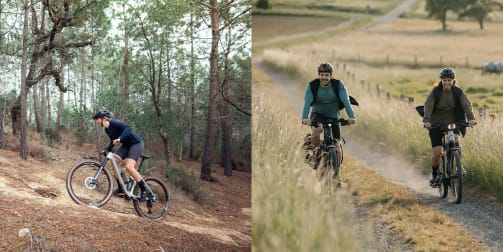
Are you a sporting or a leisure cyclist? This may sound like philosophy, but it is the fundamental question to ask if you are struggling to decide between a hybrid and a mountain bike. The two types of bike may look alike but they have very different intentions. It is the choice between comfort and performance, utility and capability, and it can lead to deep questions about your own health, fitness and motivation.
Hybrid and a mountain bikes have similar-looking frames, flat handlebars and wide tyres (although we’d argue that the Commuter 9 looks like nothing else out there). The differences are in the details, like the riding position, the components the bikes are built with and the reinforcement in the frame. This guide will walk you through the key differences and lead you to the key questions you need to ask yourself when deciding between a hybrid and a mountain bike.
Contents
What does a hybrid bike mean?
When we talk of hybrid bikes, we mean practical, easy-to-ride bikes designed for commuting, fitness and all kinds of light use. They tend to be loaded with features, like wide tyres, mudguards and lights for everyday riding. Through much of the Twentieth Century, most bikes sold were designed for this kind of use. With the arrival of mountain bikes in the 1980s and 1990s, this changed dramatically, and these new, sporty bikes began to dominate the market, yet they were less suited to everyday use. Taking the best elements of both road and mountain bikes, bicycle makers combined them with more comfortable riding positions and practical features to create the modern hybrid bike.
Whether you are commuting to work, nipping to the shops or taking in some light off-road rides on the weekend, a hybrid is a very versatile bike. Where a hybrid would begin to struggle is in taking on tougher terrain off-road, as they are not designed for this kind of heavier use. You could ride one on a very easy mountain bike trail, but if you start to encounter roots, rocks and drops, it would be very much out of its depth.
This is what we would describe as leisure riding. When we think of leisure riders, we think of people who aren’t interested in how fast they can get to the shops, or whether they set the fastest time on the climb on the way, but how much they enjoy their ride. Getting there without mud on their legs is likely to be a higher priority than a Strava KOM. Our hybrid bikes are designed for a wide range of riders, from the tarmac-focused Roadlite through to the all-terrain Pathlite:ON SUV, we hope to cater to as many people’s preferences as possible.
What is a mountain bike?
Mountain biking owes a lot to hybrid bikes. The very first mountain bikes were beach cruisers adapted with fat tyres to head off-road. Since then, mountain bikes have become dedicated machines for riding rugged off-road trails.
Because they are tough and reliable, mountain bikes are suitable for almost all kinds of rides, especially with a few modifications. That said, we design our mountain bikes with a complete focus on off-road use. This means that the geometry will be less comfortable than with a hybrid, and they come with fewer practical features as standard. With a few upgrades, you could easily use a mountain bike every day, but you would need new tyres, mudguards, lights and so forth, which are all included in the cost of our hybrid bikes.
Mountain biking is what we think of as sport riding - cross-country racing is an Olympic sport, after all. One of the big features of mountain biking is progression. As riders gain experience, they tend to attempt more challenging trails, try to ride faster than they did before and maybe even compete a little. For this, they want a bike that focuses more on performance than outright comfort, with geometry emphasising speed and control. From the race-ready Exceed to the budget-friendly Grand Canyon, we have a wide range of mountain bikes for all tastes.
What are the geometry differences between a hybrid and a mountain bike?
Mountain bikers love a geometry chart. As they become more experienced, the little differences between bikes and models start to become more and more important. It can get so involved that we created a mountain bike geometry guide to help beginners understand all this. This is another of the big differences we see between a leisure and sport rider, because for commuting and light use, those differences are not very important.
In broad terms, we would describe our hybrid bikes as having a shorter riding position than our mountain bikes. For example, a medium Commuter has a reach of 423mm, while a medium Grand Canyon has a reach of 450mm. This shorter reach allows a more upright riding position, which is easier on the lower back. Beyond this, there are a lot of small differences that can be summarised simply: a hybrid bike will feel a lot less confidence-inspiring on rough ground than a mountain bike.
Differences in frame strength and weight between mountain bikes and hybrids
Despite not looking too different, our mountain bike and hybrid frames are built for very different demands. To try to help make sense of this for consumers, we use the ASTM ratings system. These are voluntary standards we adhere to that set out the usage a frame is designed for. All of our hybrid bikes are Class 2, which means they “are suitable for well-maintained hard-surface roads where the wheels remain in permanent contact with the ground.”
Even our entry-level mountain bikes, like the Grand Canyon, are built to Class 3 standards. This means that they are able to cope with everything a hybrid can, plus “it includes use on harsher, unpaved terrain. The scope for these bikes includes occasional jumps up to a maximum height of 60 cm.” If you are considering heading out for even occasional mountain bike rides, the safest choice is going to be a mountain bike.
Even though we build our hybrid bikes to a lower ASTM rating than our mountain bikes, we build them to last, so there is not a huge difference in weight between our hybrid bikes and our mountain bikes. With our Commuter hybrid bikes weighing in at 13.4kg and Grand Canyon mountain bike at 12.5kg, we don’t think that will be the deciding factor for many people.
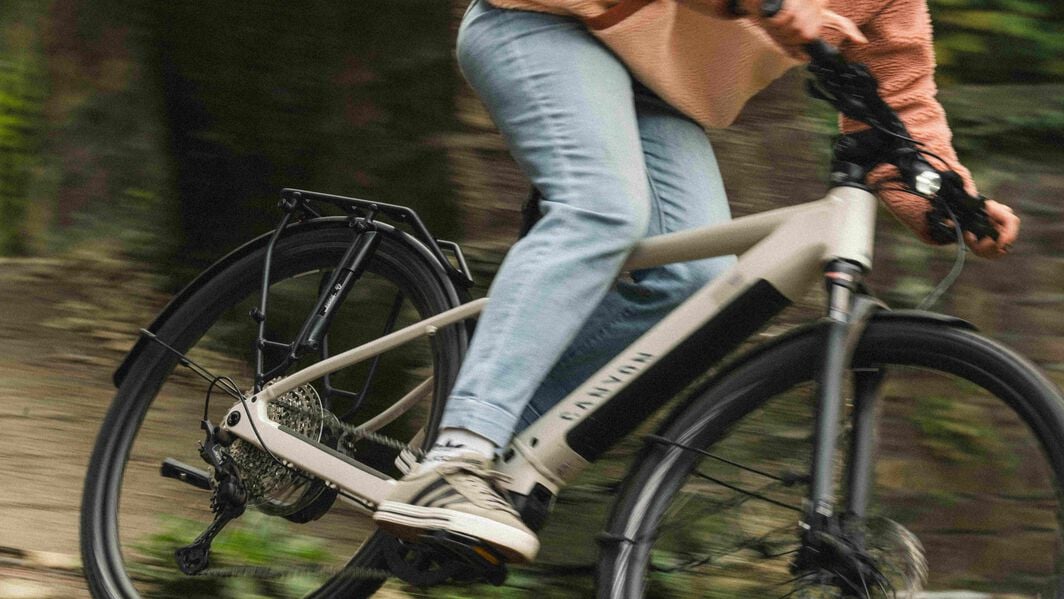
Features: Hybrid vs mountain bike
As a general rule, mountain bikes do not have the same kind of features as a hybrid. As sport bikes, they are focused on lightweight and performance, so most riders prefer not to use these kinds of features. With our hybrid bikes, we like to try to make sure that you have everything you need to do the daily miles right out of the box. Some of the key features on our hybrid bikes are:
Mudguards
Our hybrids designed for mixed surface use come with mudguards as standard. Factory-installed, you can focus on getting out riding without having to worry about getting muddy or wet. Some of our mountain bikes, like the Grand Canyon, do come with the mounts for mudguards, but you will need to buy them separately later.
Racks
Until the advent of bikepacking, you would have been hard-pressed to find a mountain bike with rack mounts; these days, they are more common, but on a hybrid, we think they are essential. These bikes should be practical, so having somewhere to pop your shopping, your lunch or the unexpected parcel is vital. Today, both our Grand Canyon and Exceed hardtail mountain bikes include several mounting points.
Suspension forks
For the most part, we do not equip our hybrid bikes with suspension forks, while all of our mountain bikes come with one. We think that most people looking for a hybrid bike will find that the added weight and required maintenance outweigh the comfort benefits. The exception to this is our all-surface, suspension hybrid bike, the Pathlite:ON which we equip with a suspension fork to smooth out the way ahead.
Lights
All of our hybrid bikes, except the sportier Roadlite, come with lights as standard. As bikes designed to be used on roads for a good part of their life, lights are essential safety features, so we believe they should be fitted as standard, and that by integrating them you get a cleaner, nicer-looking bikes.
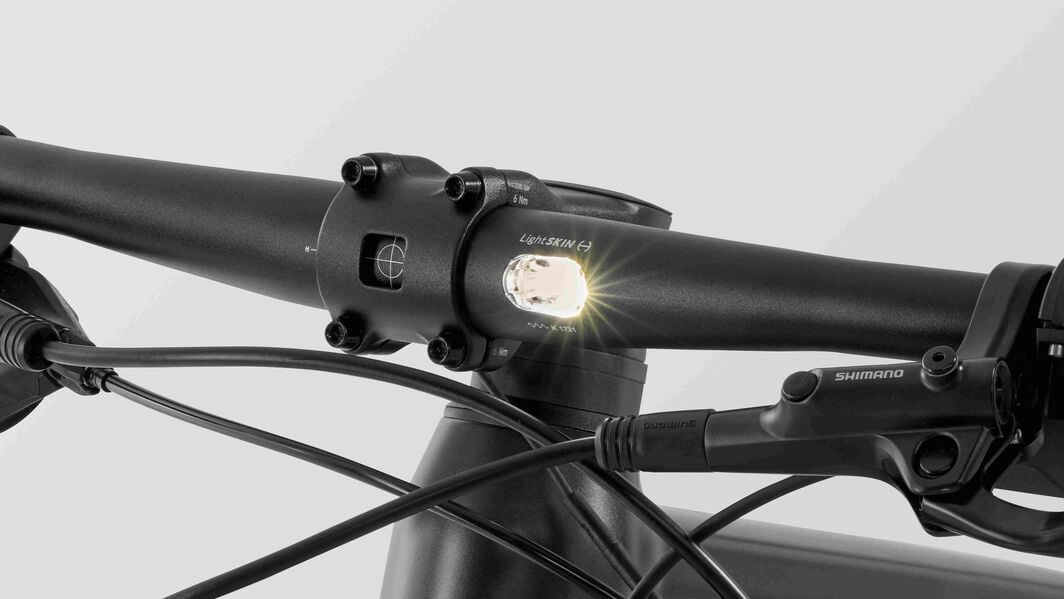
Kickstands
You would have to look long and hard to find a mountain biker with a kickstand on their bike; out on the trails, they don’t make sense at all. In town, they make nipping into a shop or cafe so much easier, which is why we equip our Pathlite, Commuter and Citylite models with them.
Step-through frames
For some people, a step-through frame is the most important feature on a bike. Being able to step through and onto the bike may be the difference between being able to ride a bike and not for people with reduced mobility. That is why we offer our Pathlite, Commuter and Citylite models with this frame option.
Belt drives
Most people don’t enjoy working on their bikes too much. If it’s not something you are used to doing, it can be confusing, difficult and expensive. We believe the best way to deal with this is to make bikes that don’t need much maintenance. This is why we equip our Commuter and Citylite models with Shimano internal gear hubs and belt drives. By moving the gear mechanism inside the hub and using a carbon belt instead of a chain, they should offer more than 30,000km of hassle-free cycling.
The one drawback to these setups is that you have a smaller range of gears than you would get with a mountain bike, which is why, for our more rugged Pathlite:ON models, we have used a standard derailleur and chain. Paired with a wide-range cassette at the back, they are better-suited to taking on challenging gradients than our other hybrid bikes.
ABS braking systems
For our high-end Pathlite:ON models, we use cutting-edge Bosch ABS technology with powerful Magura disc brakes, much like you would find on a car. This system ensures you have consistent braking, even in adverse conditions.
There are so many factors to weigh in making a decision like this; do you need a motor? How important is the weight of the bike to you? What features matter most to you? Here is an overview of the features of our hybrid range and the Grand Canyon mountain bike as a comparison:
| ASTM | Weight | Racks & Mudguards | Kickstand & Lights | |
|---|---|---|---|---|
| Pathlite:ONfly | 2 | 21.5kg | Y | Y |
| Pathlite:ON SUV | 2 | 27.9kg | Y | Y |
| Roadlite | 2 | 11.1kg | ||
| Roadlite CF | 2 | 9.9kg | ||
| Roadlite:ONFLY | 2 | 15.8kg | ||
| Commuter | 2 | 13.4kg | Y | Y |
| Commuter:ONFLY | 2 | 17.8kg | Y | Y |
| Citylite | 2 | 15.88kg | Y | Y |
| Citylite: ON | 2 | 21.6kg | Y | Y |
| Grand Canyon | 3 | 12.5kg | ||
| Grand Canyon:ON | 3 | 24.4kg | Y |
| Belt drive | Suspension fork | ABS | E-bike | |
|---|---|---|---|---|
| Pathlite:ONfly | Y | Y | ||
| Pathlite:ON SUV | Y | Y | Y | |
| Roadlite | ||||
| Roadlite CF | ||||
| Roadlite:ONFLY | ||||
| Commuter | Y | |||
| Commuter:ONFLY | Y | Y | ||
| Citylite | Y | |||
| Citylite: ON | Y | Y | ||
| Grand Canyon | Y | |||
| Grand Canyon:ON | Y | Y |
One thing to remember is that even though the Commuter weighs a little bit more than the Grand Canyon mountain bike, that weight includes mudguards, lights and racks, so the basic frame itself would weigh about the same.

How to decide between a hybrid and a mountain bike?
There are so many factors to weigh in making a decision like this. How often do you ride off-road? How much time do you have to maintain your bike? Do you need mudguards, lights and a kick-stand? We find that a quick pros and cons list usually helps to find your answer.
Pros and cons of hybrid bikes
| Pros | Cons |
|---|---|
| Simple | Not suitable for trail riding |
| Easy to maintain | Features mean they can weigh more than a mountain bike |
| Packed with features like mudguards, lights and racks | Limited gear ratio not suitable for steep hills |
| Designed for comfort |
Pros and cons of mountain bikes
| Pros | Cons |
|---|---|
| Sporty geometry | Requires more maintenance |
| Wide range gears for steep climbs | No mudguards, lights, racks, etc as standard |
| Tend to be lighter | Mountain bike tyres are slow on tarmac |
| Tougher frame can withstand more abuse |
Which bike is right for you?
There are lots of factors to weigh up if you are considering a hybrid vs a mountain bike, but the final decision comes down to what you will find most enjoyable. If you are still struggling, we would like to suggest a small exercise that will hopefully help you make your decision with confidence. Quite simply, write down 5-10 rides that you would like to do in the next year. Are there places you would like to visit, sights you would like to see or areas you would like to explore? Is your daily commute the most important ride of all?
When you have this list, there is one simple question to ask: Do I need a mountain bike for any of these? For example, if you have 9 items on your list that are mostly on road, but one where a mountain bike is going to be the safer choice, how important is that ride to you? If the answer is that you absolutely must do that ride, then we would recommend a mountain bike. The risks of taking an unsuitable bike on a challenging trail outweigh the minor inconveniences of living with a mountain bike every day.
| Feature | Mountain bike | Hybrid |
|---|---|---|
| Intended use | Trail riding, off-road | Commuting, paved paths, lights trails |
| Frame | Robust, aggressive geometry | Comfortable, upright position |
| Price range | €749 - €9,599 | €1,199 - €6,049 |
| Best for | Sporty, active riders who are keen to head further afield | Riders looking for something simple, reliable and practical for everyday use |
If you’re still unsure, we’d recommend starting with our buying guides, where we compare all models in detail – including our hybrid bike buying guide and mountain bike buying guide. You can also try our bike comparison tool to quickly see how different models stack up against each other.
If you are still struggling to make a decision, we would recommend heading to one of our Experience Centres. The team there will be more than happy to walk you through the entire Canyon range and even set up some test rides to help you find your perfect bike.
So, whatever you decide on – hybrid or mountain bike – just remember it’s all about having fun on two wheels!
Discover our Mountain Bikes
Did this article help?
Thank you for your feedback
-
 About the author
About the authorMatt Wragg
Get to know Matt Wragg, the freelance photographer, writer, and self-proclaimed bicycle-breaker based in Nice, France. Despite unsuccessful attempts at XC, trials, 4X, and DH racing, Matt's passion for mountain biking never waned. After a stint in communications consulting, he decided to pursue his love for cycling and moved to New Zealand. Since then, he has traveled the world, chasing trails and building a successful career as a cycling photographer and writer. In 2021, he was diagnosed as autistic and has been coming to terms with it. His bike cellar is a true testament to his love for cycling, housing bikes that range from freeride to cargo.
